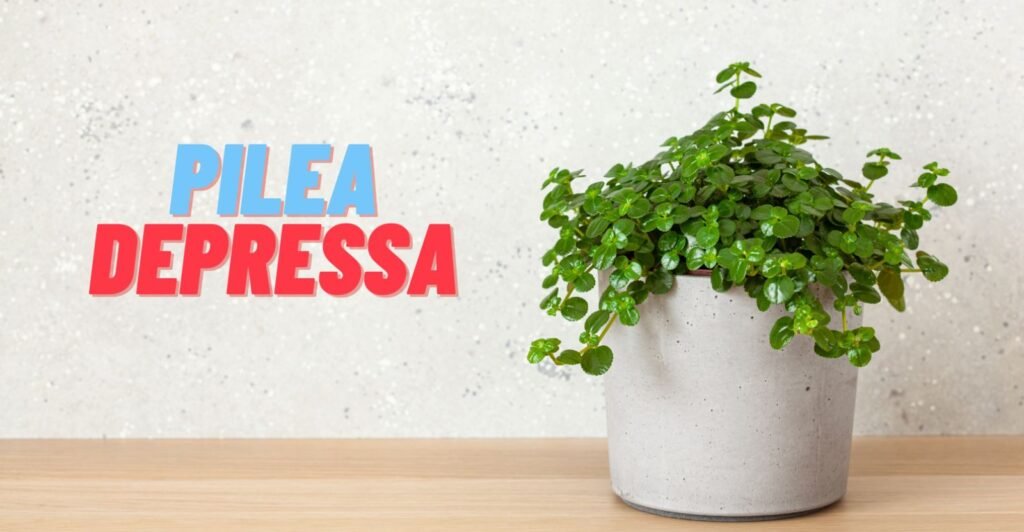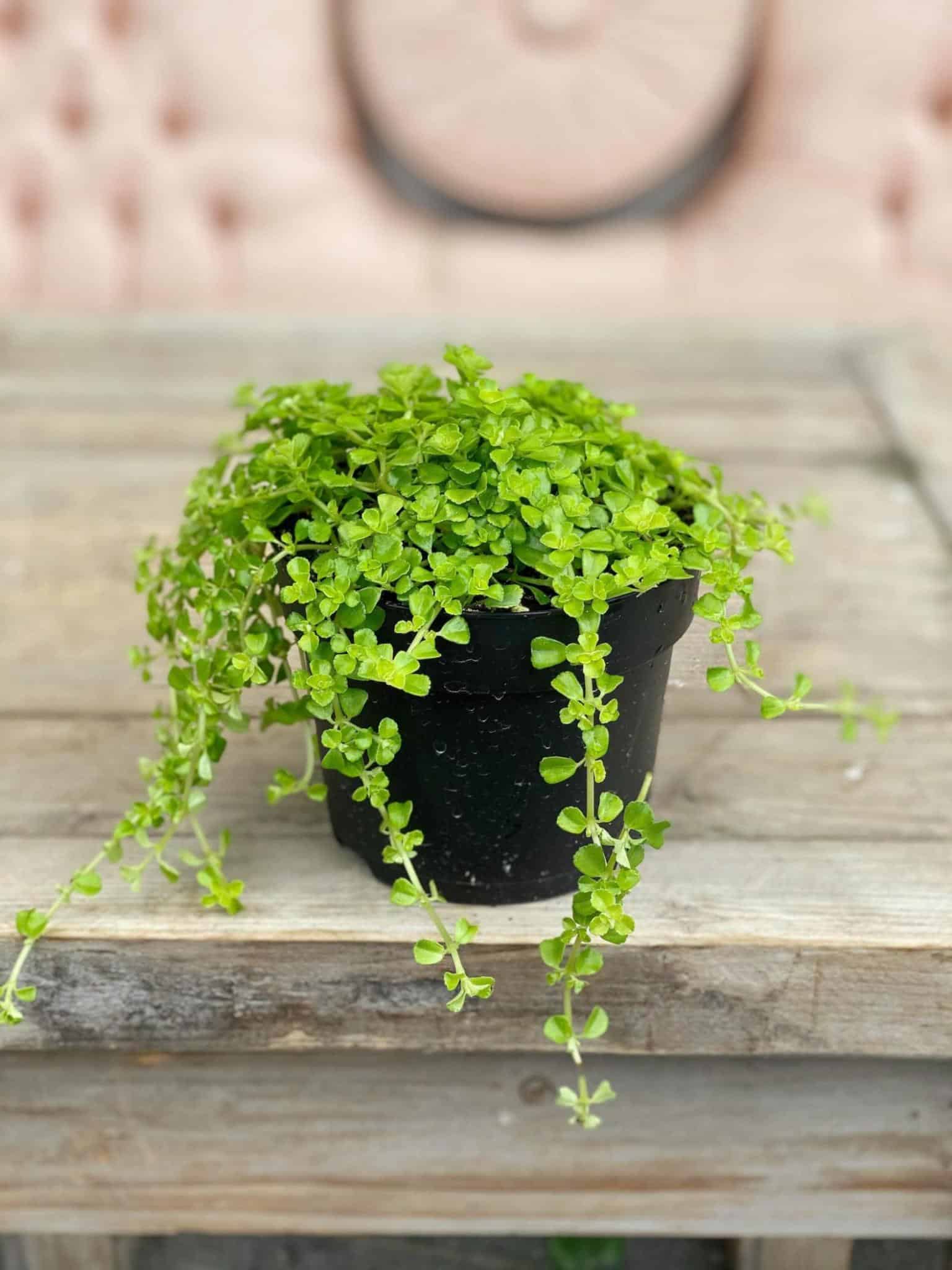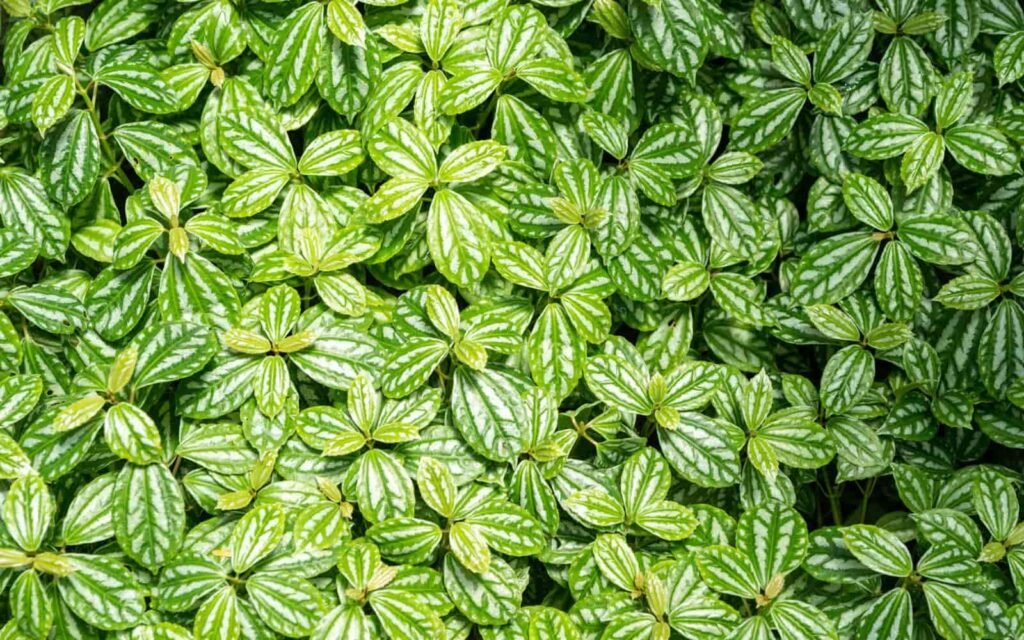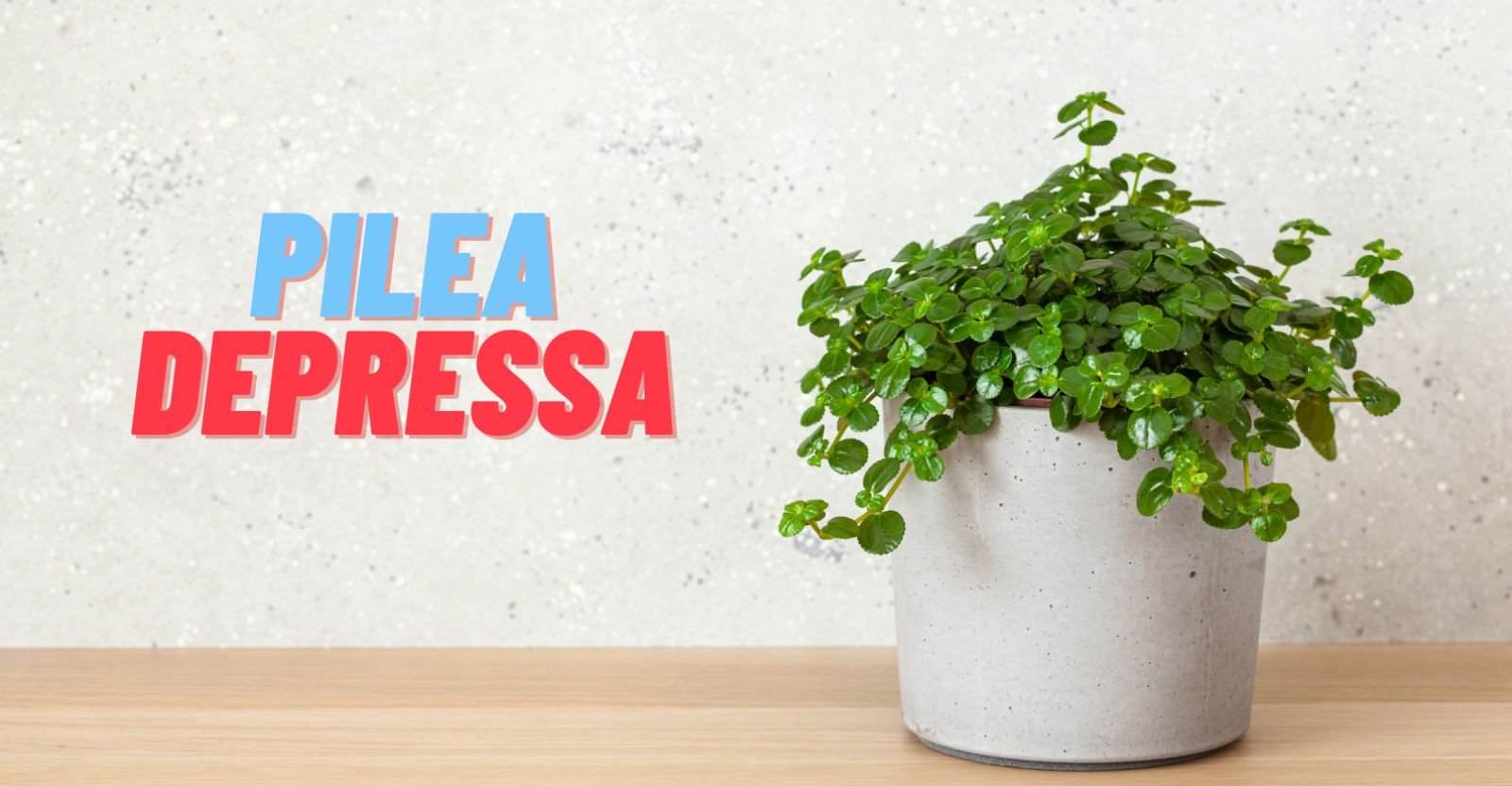
Pilea Depressa: How to Grow and Care for Baby Tears Plant
Pilea depressa, also known as the Baby Tears plant, is a popular evergreen climbing plant that has gained a reputation for being easy to care for and adaptable to both indoor and outdoor spaces. It’s a great choice for anyone looking to add a low-maintenance yet stunning plant to their home. With its dense, green foliage, this plant can serve as a beautiful ground cover or work well in hanging baskets or containers.
Here’s everything you need to know to successfully grow and care for Pilea depressa.
What is Pilea Depressa?

Pilea depressa is an ornamental climbing plant that’s known for its small, thick leaves with scalloped edges, growing on soft stems. This plant belongs to the Urticaceae family and is a member of the Pilea genus, which has over 780 different species. You may also hear it called by other names such as Baby Tear, Angel’s Tear, Jacob’s Tear, Corsican Creeper, and Pollyanna Vine.
Pilea depressa’s tiny serrated leaves, which are about 1/4 inch long, grow densely, giving it a lush, full appearance. This makes it a perfect plant for hanging baskets, terrariums, or even small dish gardens.
Varieties of Pilea Depressa

There are several types of Pilea plants in the Pilea genus, and a few of the most popular varieties include:
- Pilea cadierei (Aluminum Plant): Known for its silver-stripe leaves, it grows up to 18 inches tall and does well in medium shade.
- Pilea nummulariifolia (Creeping Charlie): A low-growing perennial, perfect for ground cover or hanging baskets. It thrives in partial shade and moist, well-drained soil.
- Pilea serpyllacea (Artillery Plant): With fern-like foliage, this plant is great as a ground cover or in containers. It grows best in light shade with moisture-rich soil.
How to Propagate Pilea Depressa

Pilea depressa can be propagated easily using stem cuttings. Here’s how to do it:
- Choose a Healthy Stem: Select a healthy, vigorous vine with multiple leaves.
- Snip the Cutting: Cut the stem, making sure there are a couple of nodes (the small bumps where leaves grow) on the cutting.
- Place in Water: Put the cutting in a small glass of water and place it in a spot with indirect sunlight. A windowsill away from direct sunlight works well.
- Wait for Roots: In 1 to 3 weeks, the cutting will start growing roots. Once the roots are strong enough, transfer the cutting into a bigger pot.
How to Care for Pilea Depressa

This plant is easy to care for and can thrive with just a little attention. Here’s what you need to know:
Soil
Pilea depressa prefers slightly sandy, moist soil that drains well. If you’re growing it indoors, make sure the pot has drainage holes to prevent water from accumulating at the bottom. The ideal soil pH is between 6 and 7.5 (slightly acidic to neutral). Adding organic compost and perlite can help improve soil quality and water drainage.
Watering

Water your Pilea when the top 2-3 inches of soil are dry. In hot seasons, you may need to water it 2-3 times a week. During the winter, it’s fine to water just once a week. Be cautious not to overwater, as this can lead to root rot. If the plant’s leaves start to wilt, it’s usually a sign that it’s too dry. Water thoroughly, ensuring excess water drains from the pot.
If you use a saucer beneath the pot, empty it regularly to avoid water buildup.
Humidity and Misting

Pilea doesn’t need to be misted, as long as you’re maintaining adequate moisture levels in the soil. However, if you’re growing it in an arid environment, you can mist the plant lightly every other day to boost humidity. Just be careful not to overdo it, as excess moisture on the leaves can lead to fungal growth.
Fertilizing
To encourage healthy growth, you can feed Pilea depressa with a diluted liquid fertilizer once a month during the growing season (spring and summer). Use a fertilizer that’s rich in nitrogen to support the development of dense leaves. You don’t need to fertilize it during the winter months when the plant is dormant.
Temperature and Sunlight

Pilea depressa thrives in temperatures between 60°F and 70°F (15°C to 25°C). It doesn’t like drastic temperature changes, so keep it in a stable environment. If you’re growing it outdoors, bring it inside when the temperature drops below freezing.
This plant needs 4 to 6 hours of indirect or partial sunlight each day. Avoid placing it in direct sunlight, as this can scorch the leaves. If you’re growing it indoors and natural light is insufficient, you can use a grow light to keep the plant healthy.
Pruning
Pilea depressa is a low-maintenance plant, but regular pruning helps maintain its shape and prevent it from becoming leggy. If you’re growing it in a hanging basket, pruning can help the vines grow vertically and spread evenly. Trim back any long or unruly stems to keep the plant looking neat and tidy.
Troubleshooting: Common Issues with Pilea Depressa

Why Are the Leaves Falling Off?
If you notice leaves falling off your Pilea depressa, it’s often due to overwatering or direct exposure to sunlight. Pilea plants like moist soil but should never sit in waterlogged soil. Overwatering can cause root rot, which stresses the plant and leads to leaf drop. Additionally, too much direct sunlight can damage the leaves, so make sure your plant gets only indirect light.
Do Pilea Depressa Plants Bloom?
Yes! Baby Tears plants bloom small, creamy white flowers, typically in late spring. While these flowers aren’t the main attraction, they add a charming touch to the plant’s overall appearance.
Can Pilea Depressa Be Used in a Terrarium?

Pilea depressa is an excellent choice for a terrarium due to its ability to grow horizontally and spread nicely. However, be cautious of its invasive tendencies. In an enclosed space like a terrarium, Pilea can quickly take over if not regularly trimmed.
Is Pilea Depressa Toxic to Pets?
No, Pilea depressa is non-toxic to cats and dogs, so it’s safe to have around pets. However, keep in mind that pets might chew on the leaves, which can damage the plant.
Where to Buy Pilea Depressa

Pilea depressa is available at many local garden centers or home improvement stores like Home Depot and Lowes. If you can’t find it nearby, you can easily order it online from sites like Amazon or various gardening retailers. When ordering online, the plant is usually shipped in a small pot or as bare-root with detailed instructions on care.
With its beautiful dense foliage and minimal care requirements, Pilea depressa is a fantastic addition to any indoor or outdoor garden. Follow the simple care guidelines, and you’ll have a healthy, thriving plant that will be a charming part of your home for years to come.
FAQs for Caring for Pilea Depressa
1. What are the ideal growing conditions for Pilea depressa?
Pilea depressa thrives in bright, indirect light. It prefers well-draining soil and moderate temperatures, typically between 60-75°F (16-24°C). Avoid placing it in direct sunlight, as this can scorch the leaves. It also enjoys humidity, so keeping it in a room with moderate humidity is ideal.
2. How often should I water Pilea depressa?
Water Pilea depressa when the top inch of soil feels dry. Overwatering can cause root rot, so be sure not to let the plant sit in standing water. In the winter, you may need to water less frequently as the plant’s growth slows.
3. Can Pilea depressa tolerate low light?
While Pilea depressa can survive in low light, it will grow best in bright, indirect light. In low light conditions, the plant’s growth may slow down, and its foliage might become sparse. To encourage healthy growth, aim for a spot with plenty of indirect light.
4. How do I propagate Pilea depressa?
Pilea depressa can be propagated through stem cuttings. Simply cut a healthy stem with a few leaves and place it in water or directly into a pot with soil. After a few weeks, you should see roots developing. Once the cutting has a solid root system, you can transplant it into a new pot.
5. How do I prevent pests on Pilea depressa?
Common pests like spider mites, aphids, and mealybugs can sometimes infest Pilea depressa. Regularly inspect your plant for signs of pests and wipe the leaves gently with a damp cloth. If you notice pests, treat the plant with insecticidal soap or neem oil, ensuring you cover both the top and bottom of the leaves.
6. Why are the leaves on my Pilea depressa turning yellow?
Yellowing leaves on Pilea depressa can indicate overwatering, poor drainage, or a lack of nutrients. Check the soil’s moisture level before watering, and ensure the pot has proper drainage to prevent water from accumulating at the bottom. Yellowing can also happen if the plant is exposed to direct sunlight for too long.
7. How do I repot Pilea depressa?
Pilea depressa should be repotted every 1-2 years, or when it outgrows its current pot. Choose a pot that is 1-2 inches larger in diameter than the current one and ensure it has drainage holes. Gently remove the plant from its pot, shake off excess soil, and place it into the new pot with fresh, well-draining soil. Water thoroughly after repotting.
8. Is Pilea depressa safe for pets?
Yes, Pilea depressa is non-toxic to pets, making it a safe choice for homes with cats or dogs.
9. How do I encourage fuller growth in my Pilea depressa?
To promote fuller growth, pinch back the tips of the plant to encourage branching. This will help the plant become bushier and more compact. Additionally, regular feeding with a balanced liquid fertilizer during the growing season can support healthy, lush growth.
10. Can Pilea depressa be grown outdoors?
Yes, Pilea depressa can be grown outdoors in USDA hardiness zones 10-11, where the climate is warm year-round. It thrives in shaded or partially shaded areas with protection from direct sun and harsh winds. In colder climates, it’s best kept indoors or moved inside during the winter months.
Conclusion
With its minimal care requirements and attractive foliage, Pilea depressa is an excellent addition to any garden or indoor space. By following the simple care guidelines, including proper watering, light, and humidity levels, you can enjoy a healthy, thriving plant for years to come. Keep an eye out for pests, and don’t hesitate to propagate it to expand your collection or share with friends. Happy gardening!

